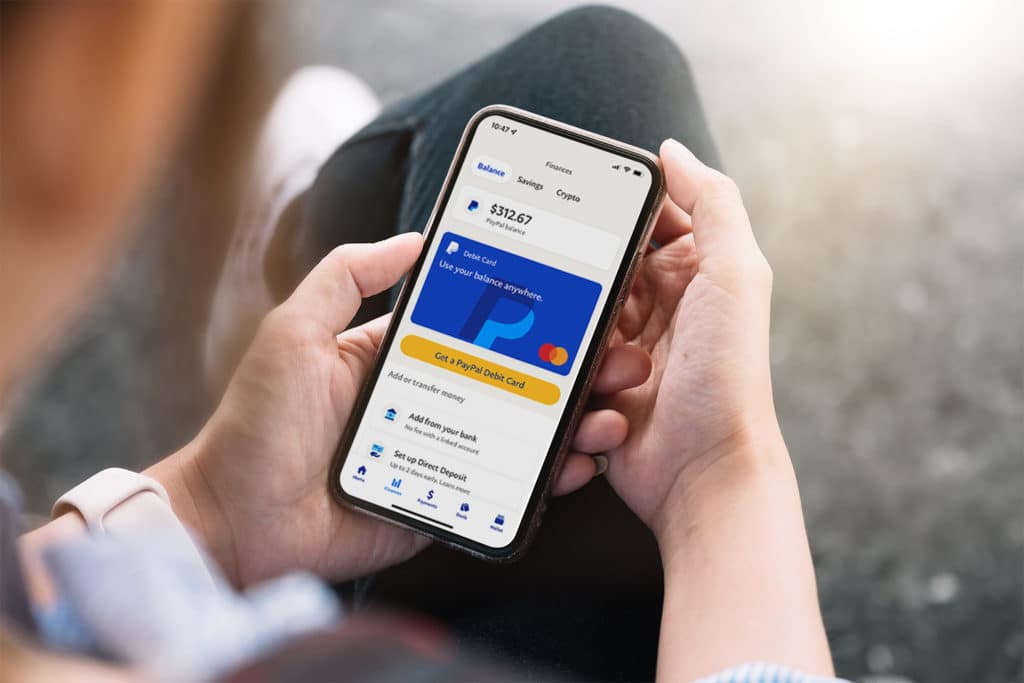Launching a graphic design business is an exciting step toward turning your creative talent into a thriving enterprise. Whether you’re an experienced designer ready to branch out on your own or looking to transform a side project into a full-time venture, building a business requires more than just artistic skill. From defining your services to setting up the right financial and operational foundations, preparation is key. Before you take on your first client project, it’s worth investing the time to establish a clear roadmap—so your passion translates into sustainable growth.
How to start a graphic design business (step-by-step)
- Name your graphic design business and create a logo
- Register your business name
- Get your tax ID number
- Develop a business plan
- Open a bank account for your business
- Create a professional online portfolio
- Set your pricing
- Find your first clients
- Create a proposal template
- Sign a contract
- Communicate with your clients
- Deliver high-quality work
- Invoice and collect payment
- Gather testimonials
- Ask for referrals
- Keep searching for new clients
- Develop a growth mindset
1. Name your graphic design business and create a logo
A task like naming your graphic design business might feel daunting. You might wonder how to choose a brand name everyone will remember—after all, you’re a designer, not a branding specialist. That’s perfectly okay. In the beginning, choose a business name that’s easy to remember and spell.
Of course, you can always use your first and last name so that people who know you will find you easily. The most important thing about choices is that you make one and stick with it. Then check to see if a domain name is available that contains your business name. As long as you love the name you’ve come up with, go for it!
2. Register your business name
Once you’ve decided on a business name, you’ll want to register your business as a Sole Proprietorship or a Limited Liability Corporation (LLC). A Sole Proprietorship is the simplest structure for independent business owners with no employees. In contrast, an LLC for graphic design will provide an extra layer of financial protection. If you operate under your legal name rather than a distinct business name, formal registration may not be required—though there are still benefits to official registration.
Ultimately it’s up to you and what you feel best suits your business. You can always change your business registration later down the road.
3. Get your tax ID number
It’s free to apply for an EIN (Employer Identification Number), and you’ll need it to pay for your federal taxes, hire employees in the future, open a bank account and apply for business licenses and permits. It might seem overwhelming but it’s an important step.
4. Develop a business plan
Next, develop a business plan in order to map out how your business will operate. You can start by answering these questions:
- What services will you offer?
- Put together a list of graphic design business ideas and services you’re comfortable offering like logo design, packing & label design, signage design, and website design. You can get more service ideas by browsing graphic design marketplaces like Fiverr or Creative Market.
- What’s your niche?
- Once you know the services you offer, choosing one or two niches will help you find your focus. Think of your niche as your industry of interest, for example, fashion, software, health, sports, gaming, blockchain, etc. Select industries that most align with your passion and expertise. Knowing your niche will help you determine your target audience.
- Who’s your target audience?
- Your target audience is your ideal customer. Do you want to work directly with entrepreneurs, small business owners, large tech companies, or agencies? Finding your target audience will help you focus on the clients you want to work with rather than accepting any job that comes your way.
- How much will you charge?
- When deciding how much to charge for your graphic design business, consider how much revenue you want to make a month and how many clients you need to meet your goal. If you charge by the hour, you might need to work full-time hours to reach your benchmark, whereas charging a project fee will reward you for working faster.
- How will you find new design clients?
- Make a list of ways you’ll find graphic design clients like which marketplaces you’ll join and what marketing efforts you’ll make along the way. Having this list handy will help give you direction when you’re ready to promote your business.
- How will I create retainer clients?
- You’ll also want to think about the long-term: how to turn a new client into a repeating client so that you bring in revenue every month. Think about the monthly services you can offer on retainer to keep the work flowing.
5. Open a bank account for your business
It’s a good idea to open a bank account for your business, to make sure you keep your business and personal finances separate.
6. Create a professional online portfolio
It’s easy to let your portfolio fall by the wayside, but it’s essential to schedule time on your calendar to create a professional gallery of your work online. This will help attract new clients and give prospective clients a better idea of your style and capabilities.
You can create an online portfolio on your own website/online portfolio platform or join a marketplace. Here are a few places worth checking out if you haven’t already:
Marketplaces:
- Behance – Billed as the world’s largest creative network for showcasing and discovering creative work, and powered by Adobe.
- Dribbble – Like Behance, Dribbble is a social networking and self-promotion platform for digital designers and creatives. It’s great for creating your portfolio and finding jobs.
Website builders/online portfolio platforms:
- Webflow – A no-code website builder used by many professional designers.
- Editor X – A free no-code website builder made for designers and powered by Wix.
- Squarespace – A professional website builder with really nice templates, so you don’t have to start from scratch.
- Adobe Portfolio – If you’re already using Adobe Creative Cloud, you can create a portfolio for free.
7. Set your pricing
As I mentioned above, when setting your pricing, you’ll want to consider your ideal monthly revenue and whether to charge by the hour or project. Researching what other designers in your industry are charging is also important, so you’ll know where you stand. Whether you choose an hourly rate or project fee, make sure to include any client communication in your calculations and cap the number of edits to two or three. You don’t want to be on the fifth version of a design for a particular client and not be compensated for the extra effort. Put your project rates in a spreadsheet so you can re-evaluate your pricing as you go.
8. Find your first clients
Now for the fun part! How to get graphic design clients:
- Spread the word
- Tell everyone you know (seriously). If you’re leaving your company to strike out on your own, include all of your details in your final goodbye email so your colleagues can reach out to you as clients or refer others to you. Post on your social media accounts so your friends and family can spread the word, too. Now’s the time to start using your network to find your first few clients.
- Update your Linkedin profile
- Take the time to update your headline, current position, and experience. Send recommendation requests to coworkers you’ve worked with and offer to write one for them, to further motivate them.
- Join an online marketplace
- Create a profile on Fiverr, Upwork, or TopTal and share it with your social network so people will know where to find you.
- Sell digital goods
- While you’re looking for graphic design clients, you can use your skills to diversify your income by selling printables on Etsy. There are loads of different types of digital goods, and you can advertise pretty affordably within the Etsy marketplace. The plus of selling printables is you don’t have to worry about shipping. And, this is a great way to be discovered by new clients for your graphic design business, who may decide to hire you for a custom project.
Recent Articles That Might Interest You:
9. Create a proposal template
Together with a quote, creating a proposal is a professional way of showing who you are, what services you offer, and how much you charge. It enables you to show off the value you’re offering and further justify your rate. As a graphic designer, you’ll knock this task out of the park, so create a template that reflects your skills!
Here are a few platforms to create your proposal template:
10. Sign a contract
Before you start every project, make sure to sign a contract. You can create your own using a professional contract template or work with a lawyer to prepare one. To streamline the signing process you can use an eSignature program like DocuSign or send over a PDF. There’s a good chance your client may provide a contract themselves.
11. Communicate with your clients
One of the advantages of running your own business is the flexibility to manage your own schedule. Still, regular communication with clients is essential to building trust and keeping projects on track. By maintaining consistent updates—such as sending progress reports—you’ll stay top of mind and position yourself for repeat business.
12. Deliver high-quality work
Once you’ve landed a client and signed a contract, make sure to deliver high-quality work on time. That’s the best way to keep your client happy and continue the working relationship.
13. Invoice and collect payment
You’ll need to create and send an invoice at the end of each project. You can use online invoicing tools to send your clients invoices directly via email, as well as set up automatic payment reminders so you don’t have to send reminders yourself.
14. Gather testimonials
After completing work for new clients, ask them to leave a review on your website, online marketplace profile, LinkedIn page, etc. That way, your reputation develops right alongside your portfolio.
15. Ask for referrals
To make sure you have a steady stream of clients knocking on your door, ask your current clients to recommend you to other entrepreneurs or business owners they may know. If you’re feeling uncomfortable about doing so, follow this guide on how to ask for referrals (and also know that it’s totally normal).
16. Keep searching for new clients
You always want to aim to bring in new clients to your graphic design business, and you can go about this in any number of ways. For one, you can start a blog that talks about best practices and industry trends, and send it out as a monthly newsletter to your mailing list. You can cast a wide net by posting on Facebook, Linkedin, and Instagram. You can connect with an engaged audience by attending networking events for local businesses and join Facebook groups to further get your name out there. Bottom line: there are plenty of ways to grow your client list!
17. Develop a growth mindset
No matter how busy or slow business gets, make time to learn. Building your practice and learning new skills will keep your work fresh and your mind engaged. It’s important to remember that there’s always something new to learn—that’s what keeps your journey as an independent graphic designer exciting!
Make sure to push your boundaries, so you can grow professionally. Even when a project feels outside of your comfort zone, be bold and go for it. It will challenge you to expand your skill set and acquire new skills. Pushing yourself in this way will help you diversify your design portfolio and set you up for new, varied projects and clients.
Keep betting on yourself
Running your own graphic design business isn’t without challenges, but it offers unmatched rewards. The freedom to shape your schedule, choose the clients you want to partner with, and direct the growth of your business is a powerful advantage. Success comes from staying focused on the bigger picture—balancing creativity with strategy, maintaining strong client relationships, and continually refining your vision. With discipline, passion, and a commitment to excellence, you’re not just building a business—you’re building a career and a legacy you can be proud of.




